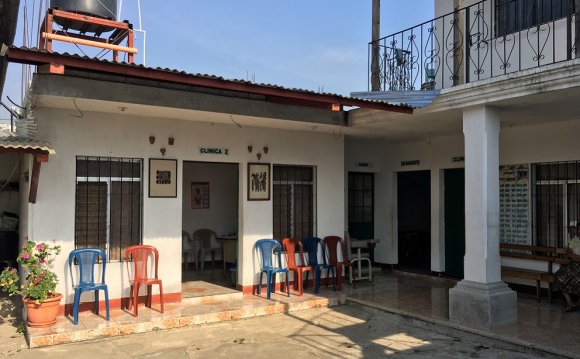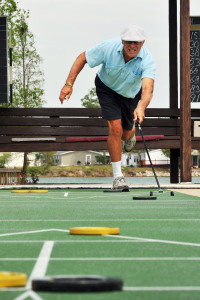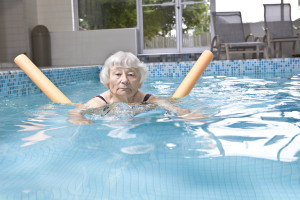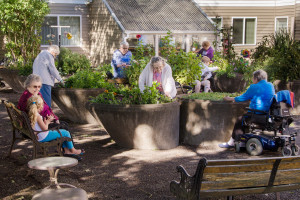
Continuity care home nurses Central American

You’ll need a Ph.D. to inform us apart
Active-adult communities, assisted-living facilities, continuing-care pension communities — that is simply the tip associated with jargon iceberg for places individuals 55 and over might invest their fantastic years. And since each facility makes use of various terms and has different rates frameworks, comparison-shopping becomes very difficult. “You can go crazy learning the language, ” states Karyl Cafiero, 61, of Brooklyn, N.Y., who has investigated communities for her mother-in-law.
The senior housing industry has actually largely restored from its slump throughout the Great Recession, whenever numerous prospective residents couldn’t transfer since they couldn’t sell their domiciles. Assisted residing services and continuing-care pension communities aim for occupancy prices between 90percent and 95percent and they are at this time at entry level of the range, claims Andrew Carle, executive-in-residence at the system in senior housing administration at George Mason University in Fairfax, Va.
The distinctions among communities, naturally, are particularly important to residents. Active-adult communities are a “want-driven product, ” says Gregg Logan, an Orlando, Fl.-based handling director of RCLCO, a proper property consultancy. This basically means, they’re a location where people decide to stay and play among similar adults (typically, kiddies are merely permitted to go to, maybe not live).
 Assisted-living services and continuing-care pension communities, in comparison, are “need-based communities” that men and women proceed to once they can no longer live on their very own or, for individuals who move into the independent-living portion of a continuing-care retirement neighborhood, if they anticipate the next need for help. You will find between 30, 000 and 40, 000 assisted-living facilities inside U.S. and about 2, 500 CCRCs, according to business estimates. (Active-adult communities aren’t counted by the U.S. Census Bureau consequently they are thus harder to track, experts state.)
Assisted-living services and continuing-care pension communities, in comparison, are “need-based communities” that men and women proceed to once they can no longer live on their very own or, for individuals who move into the independent-living portion of a continuing-care retirement neighborhood, if they anticipate the next need for help. You will find between 30, 000 and 40, 000 assisted-living facilities inside U.S. and about 2, 500 CCRCs, according to business estimates. (Active-adult communities aren’t counted by the U.S. Census Bureau consequently they are thus harder to track, experts state.)
While assisted living is oftentimes a way place between home additionally the more intensive proper care of a nursing facility, continuing-care your retirement communities accommodate three amounts — independent living, assisted residing and nursing care — using one campus. Regulations vary on whether assisted-living services can accommodate people who have severe dementia, and to what level.
Assisted living facilities aren’t truly considered retirement communities — they target round-the-clock health care bills, whereas assisted-living services and continuing-care your retirement communities emphasize amenities eg Olympic-size pools and structured personal activities. What’s even more, nursing facilities come under national regulation, while assisted-living services are supervised at the state amount (continuing-care retirement communities tend to be some a hybrid whoever oversight depends upon the degree of attention provided).
There’s no doctor inside your home
Assisted-living services home frail, vulnerable residents, therefore it’d be all-natural to believe they own a health care provider in the premises. Ends up, numerous don’t have even a registered nurse. “There’s little medical care here, ” claims Eric Carlson, directing attorney because of the nationwide older persons Law Center, an advocacy team.
 With assisted-living services, laws differ at the condition level on which types of personnel must be current, and during exactly what hours. Insufficient medically trained staff often means an overuse of crisis services and hospitalizations, a stressful and pricey proposition for residents, professionals say.
With assisted-living services, laws differ at the condition level on which types of personnel must be current, and during exactly what hours. Insufficient medically trained staff often means an overuse of crisis services and hospitalizations, a stressful and pricey proposition for residents, professionals say.
The population of assisted-living facilities is continuing to grow older and sicker in roughly 2 decades since this housing idea first appeared, states David Kyllo, executive director associated with the nationwide Center for Assisted life. What’s more, hospitals tend to be discharging patients much sooner than they did in the past. Assisted-living facilities tend to be giving an answer to these trends by adding even more on-site medical solutions, Kyllo claims, noting that people should always ask what the health staffing levels are at the facilities they’re considering.
Nursing facilities generally have a health care provider as health director whom supervises the nurses on staff. There is almost certainly not a health care provider on site constantly, but you will see one on call, states Shirley B. Whitenack, somebody with Schenck, cost, Smith & King in Florham Park, N.J., and president-elect of the nationwide Academy of Elder Law Attorneys.
 Active-adult communities usually do not promote their particular long-lasting attention services, towards the extent they usually have any anyway, Logan says. Yet still-active boomers that buying a community should at least think about what takes place if they have a health crisis, specialists advise. “If i've a heart assault, we don’t desire to be waiting for a medevac helicopter, ” Logan states. Potential residents should check up on the proximity of — and available services at — the closest medical center.
Active-adult communities usually do not promote their particular long-lasting attention services, towards the extent they usually have any anyway, Logan says. Yet still-active boomers that buying a community should at least think about what takes place if they have a health crisis, specialists advise. “If i've a heart assault, we don’t desire to be waiting for a medevac helicopter, ” Logan states. Potential residents should check up on the proximity of — and available services at — the closest medical center.
Look beyond the metal chandelier
Initially impressions count, and several facilities invest in attractive details particularly elegant furniture and flower displays due to their lobbies. While they're great, they don’t always talk with the grade of care offered at facilities, specialists state.
Potential residents and their families should look beyond the décor and shiny brochures. Activities and staffing levels can differ in accordance with the time, therefore see more than once at differing times making yes one check out includes dinner when you look at the dining hallway. That meal can inform families about more than just the grade of the food, itself perhaps not a little consideration — dining there will additionally show exactly how staff interacts with residents. Households also needs to ask what processes the center features for monitoring who shows up for dishes as well as for after up with people who don’t.
One of the more important criteria whenever picking a facility? Staff stability.Turnover is high among health aides at retirement communities, as the work is hard and low-paying. But continuity of care is very important for older people, specifically those with dementia who can be disoriented adjusting to too many brand new faces. One conversational way for potential people for a feeling of return would be to ask every employee they meet the length of time they’ve already been truth be told there.
Ask to speak with the facility’s top manager, and take it as a bad indication if a brief conference is declined, advises Andrew Carle. “The neighborhood is as good as the administration, ” Carle states. “we don’t care if it has a brass chandelier in lobby.”

















